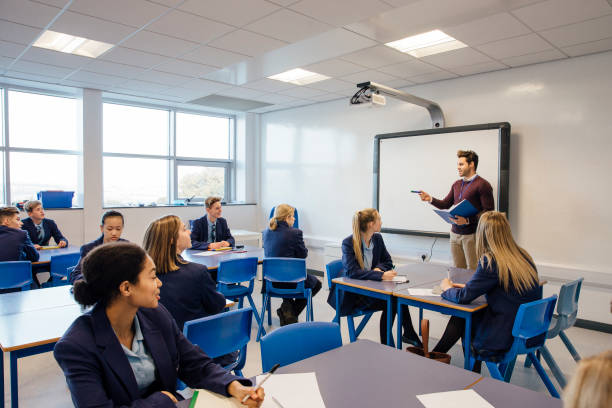
剑桥雅思7阅读Test1Passage3原文翻译
剑桥雅思7阅读Test1Passage3这篇文章主要探讨了乔治·洛扎诺夫提出的暗示教学理论。
这篇文章主要探讨了乔治·洛扎诺夫提出的暗示教学理论,以及其在外语学习中的应用。洛扎诺夫认为,通过非特异性心理反应(无意识处理)形成的连接比通过有意识处理形成的连接更加持久。他将间接教学作为核心教学系统,以帮助学生回忆并轻松学习新的知识。这种教学方法使用音乐、沉默和周边细节来引发学习过去材料的回忆,并强调学生通过使用语言进行交流来应用所学。洛扎诺夫认为,暗示教学可以帮助学生每节课学习1000个新的外语单词。尽管这种教学方法在现代语言教学中获得了一定声望,但很少有教师能够复制洛扎诺夫和他的合作者的成果。这可能是因为学生们没有形成适当的心态和动力,将此方法视为真正的教学,而不仅仅是安慰剂效应。
第1自然段 Educating Psyche by Bernie Neville is a book which looks at radical new approaches to learning, describing the effects of emotion, imagination and the unconscious on learning. One theory discussed in the book is that proposed by George Lozanov, which focuses on the power of suggestion. | 《教育灵魂》是伯尼·内维尔(Bernie Neville)的一本书,探讨了学习的激进新方法,描述了情感、想象力和潜意识对学习的影响。书中讨论的一个理论是乔治·洛扎诺夫(George Lozanov)提出的建议力量的理论。 |
第2自然段 Lozanov’s instructional technique is based on the evidence that the connections made in the brain through unconscious processing (which he calls non-specific mental reactivity) are more durable than those made through conscious processing. Besides the laboratory evidence for this, we know from our experience that we often remember what we have perceived peripherally, long after we have forgotten what we set out to learn. If we think of a book we studied months or years ago, we will find it easier to recall peripheral details – the colour, the binding, the typeface, the table at the library where we sat while studying it – than the content on which we were concentrating. If we think of a lecture we listened to with great concentration, we will recall the lecturer’s appearance and mannerisms, our place in the auditorium, the failure of the air-conditioning, much more easily than the ideas we went to learn. Even if these peripheral details are a bit elusive, they come back readily in hypnosis or when we relive the event imaginatively, as in psychodrama. The details of the content of the lecture, on the other hand, seem to have gone forever. | 洛扎诺夫的教学技术基于这样一个证据:通过无意识处理(他称之为非特异性心理反应)在大脑中形成的连接比通过有意识处理形成的连接更持久。除了实验室的证据外,我们从经验中得知,我们经常记得我们在感知到周边事物后的很久才会忘记的事物。如果我们回想起几个月或几年前学习的一本书,我们会发现更容易回忆起周边细节——颜色、装帧、字体、我们在图书馆学习时坐的桌子——而不是我们当时专注于的内容。如果我们回想起自己专心听过的一次讲座,我们会更容易回忆起讲者的外貌和举止、我们在礼堂中的位置、空调的故障,而不是我们当时想要学习的思想。即使这些周边细节有点难以捉摸,在催眠或者我们在想象中重新体验事件时它们会很容易回来。与之相反,讲座的内容细节似乎永远消失了。 |
第3自然段 This phenomenon can be partly attributed to the common counterproductive approach to study (making extreme efforts to memorise, tensing muscles, inducing fatigue), but it also simply reflects the way the brain functions. Lozanov therefore made indirect instruction (suggestion) central to his teaching system. In suggestopedia, as he called his method, consciousness is shifted away from the curriculum to focus on something peripheral. The curriculum then becomes peripheral and is dealt with by the reserve capacity of the brain. | 这种现象部分可以归因于对学习的常规逆向方法(极力努力记忆、肌肉紧张、疲劳引起),但它也简单地反映了大脑的功能方式。因此,洛扎诺夫将间接教学(建议)作为他的教学系统的核心。在他所称的暗示教学中,意识从课程转移到周边事物上。然后课程变得周边,由大脑的储备能力处理。 |
第4自然段 The suggestopedic approach to foreign language learning provides a good illustration. In its most recent variant (1980), it consists of the reading of vocabulary and text while the class is listening to music. The first session is in two parts. In the first part, the music is classical (Mozart, Beethoven, Brahms) and the teacher reads the text slowly and solemnly, with attention to the dynamics of the music. The students follow the text in their books. This is followed by several minutes of silence. In the second part, they listen to baroque music (Bach, Corelli, Handel) while the teacher reads the text in a normal speaking voice. During this time they have their books closed. During the whole of this session, their attention is passive; they listen to the music but make no attempt to learn the material. | 外语学习中的暗示教学方法提供了一个很好的例子。在最近的变种(1980年),它包括在班级听音乐时阅读词汇和文本。第一次课分为两部分。在第一部分中,音乐是古典音乐(莫扎特、贝多芬、勃拉姆斯),老师缓慢而庄重地朗读文本,注意音乐的动态。学生们跟随他们的书本阅读。然后是几分钟的沉默。在第二部分中,他们听巴洛克音乐(巴赫、科雷利、亨德尔),而老师用正常的语调朗读文本。此时他们关闭书本。在整个课程中,他们的注意力是被动的;他们听音乐,但不试图学习材料。 |
第5自然段 Beforehand, the students have been carefully prepared for the language learning experience. Through meeting with the staff and satisfied students they develop the expectation that learning will be easy and pleasant and that they will successfully learn several hundred words of the foreign language during the class. In a preliminary talk, the teacher introduces them to the material to be covered, but does not ‘teach’ it. Likewise, the students are instructed not to try to learn it during this introduction. | 在此之前,学生们已经通过与教职员工和满意的学生见面,建立了学习将会轻松愉快、他们将成功在课堂上学习几百个单词的外语的预期。在一个预备性的谈话中,老师向他们介绍将要涉及到的材料,但并不"教"他们。同样,学生被告知在这个介绍过程中不要试图学习它。 |
第6自然段 Some hours after the two-part session, there is a follow-up class at which the students are stimulated to recall the material presented. Once again the approach is indirect. The students do not focus their attention on trying to remember the vocabulary, but focus on using the language to communicate (e.g. through games or improvised dramatisations). Such methods are not unusual in language teaching. What is distinctive in the suggestopedic method is that they are devoted entirely to assisting recall. The ‘learning’ of the material is assumed to be automatic and effortless, accomplished while listening to music. The teacher’s task is to assist the students to apply what they have learned paraconsciously, and in doing so to make it easily accessible to consciousness. Another difference from conventional teaching is the evidence that students can regularly learn 1000 new words of a foreign language during a suggestopedic session, as well as grammar and idiom. | 在两部分课程结束几个小时后,有一个跟进课程,学生被激发回忆之前学过的材料。再次采用间接方法。学生不把注意力集中在努力记忆词汇上,而是专注于使用语言进行交流(例如通过游戏或即兴表演)。这样的方法在语言教学中并不罕见。在暗示教学中的独特之处在于它们完全致力于协助回忆。材料的"学习"被认为是自动和轻松的,是在听音乐的过程中完成的。老师的任务是协助学生无意识地应用他们所学的,并使其轻松进入意识。与传统教学的另一个不同之处在于,根据证据,学生可以通过暗示教学的方式每个课程学习1000个新的外语单词,以及语法和习惯用法。 |
第7自然段 Lozanov experimented with teaching by direct suggestion during sleep, hypnosis and trance states, but found such procedures unnecessary. Hypnosis, yoga, Silva mind-control, religious ceremonies and faith healing are all associated with successful suggestion, but none of their techniques seem to be essential to it. Such rituals may be seen as placebos. Lozanov acknowledges that the ritual surrounding suggestion in his own system is also a placebo, but maintains that without such a placebo people are unable or afraid to tap the reserve capacity of their brains. Like any placebo, it must be dispensed with authority to be effective. Just as a doctor calls on the full power of autocratic suggestion by insisting that the patient take precisely this white capsule precisely three times a day before meals, Lozanov is categoric in insisting that the suggestopedic session be conducted exactly in the manner designated, by trained and accredited suggestopedic teachers. | 洛扎诺夫曾尝试过在睡眠、催眠和恍惚状态下进行直接暗示的教学,但发现这样的程序是不必要的。催眠、瑜伽、希尔瓦思维控制、宗教仪式和信仰疗法都与成功的暗示有关,但它们的技术似乎对此并非必需。这些仪式可以被视为安慰剂。洛扎诺夫承认,在他自己的系统中,围绕暗示的仪式也是一种安慰剂,但坚持认为,没有这样的安慰剂,人们就无法或者害怕利用他们大脑的储备能力。就像医生通过坚持要求患者在饭前精确地服用这颗白色胶囊,每天三次一样,洛扎诺夫坚决要求暗示教学的课程按照指定的方式进行,由受过培训和认证的暗示教学教师进行。
|
第8自然段 While suggestopedia has gained some notoriety through success in the teaching of modern languages, few teachers are able to emulate the spectacular results of Lozanov and his associates. We can, perhaps, attribute mediocre results to an inadequate placebo effect. The students have not developed the appropriate mind set. They are often not motivated to learn through this method. They do not have enough ‘faith’. They do not see it as ‘real teaching’, especially as it does not seem to involve the ‘work’ they have learned to believe is essential to learning. | 虽然暗示教学在现代语言教学中取得了一些声望,但很少有教师能够模仿洛扎诺夫及其合作者的惊人成果。我们可能可以将平庸的结果归因于安慰剂效应不足。学生们没有形成适当的心态。他们往往对通过这种方法学习没有动力。他们没有足够的"信仰"。他们不把它视为"真正的教学",尤其是因为它似乎没有涉及他们学会的必要"努力"。 |
2023年最新雅思模拟真题推荐:
| 2023雅思口语模考真题最新 |
| 2023雅思写作模考真题最新 |
| 2023雅思阅读模考真题最新 |
| 2023雅思听力模考真题最新 |
| 雅思口语模考 |
| 雅思写作批改 |
| 雅思真题资料题库PDF下载 |







